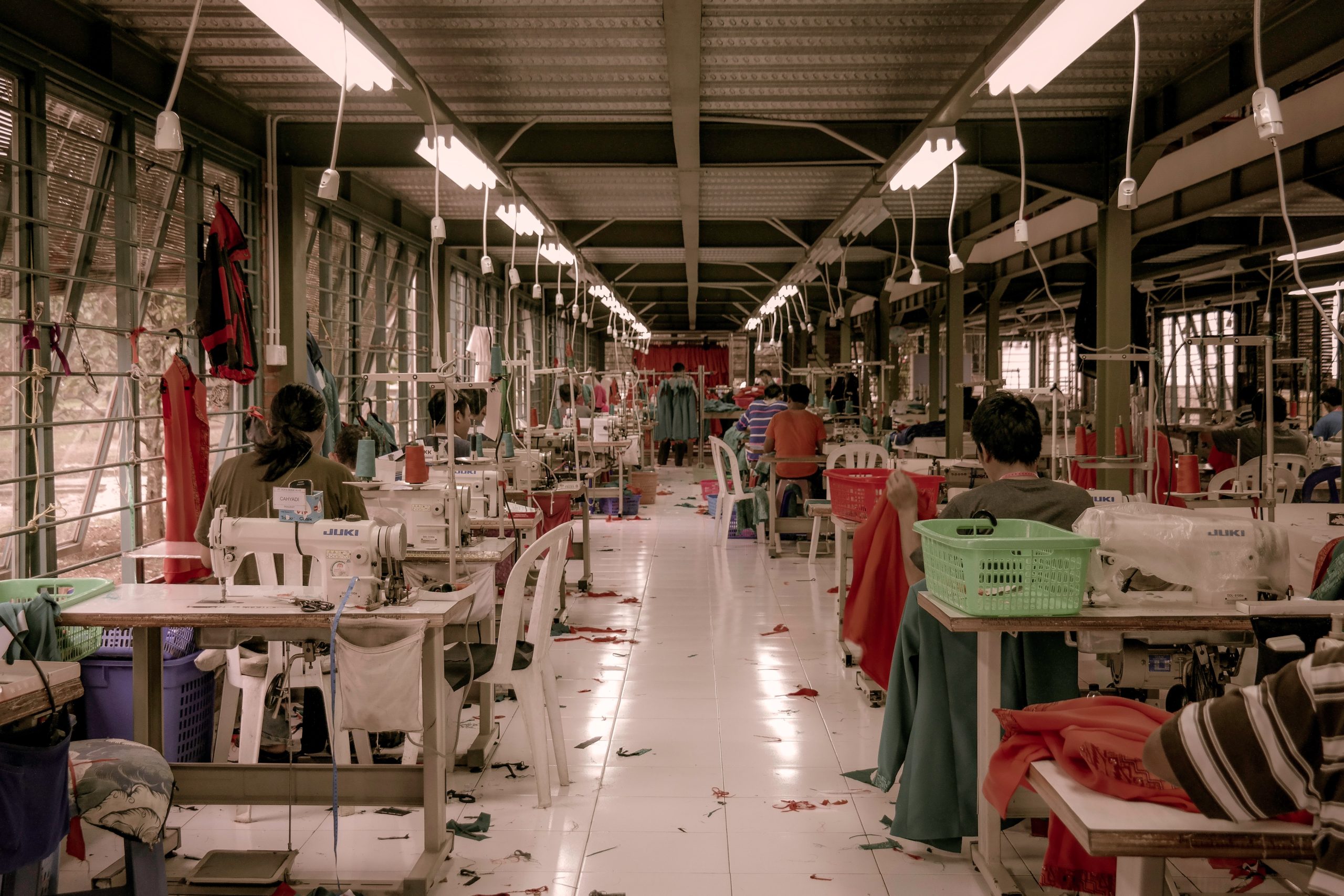Many congratulations to our CIMR colleague Ashok Kumar for winning the prestigious PWES Wallerstein Memorial Book Award, for his book ‘Monopsony Capitalism: Power and Production in the Twilight of the Sweatshop Age’ (Cambridge University Press, 2020). The annual award from the American Sociological Association commemorates the sociologist and economic historian Immanuel Wallerstein and recognises the best world-systems book.
To celebrate Ashok’s achievement, we have invited him to talk to us about his book’s key message, beneficiaries, and research plans.

Ashok, welcome to the CIMR blog! First, of all, what is the key message of your book?
The book is an attempt to explain and theorise the durability of the sweatshop by outlining an underlying logic that drives global industrial capitalism and how that shapes the structural bargaining power of workers. I begin by identifying the unequal power dynamic of many sellers and only a few buyers in labour-intensive sectors — a situation known as monopsony — becomes central. As my case I use the garment and footwear sectors which rely on this dynamic to guarantee power and profits for transnational buyers (the brands and retailers), even as the supplier firms — the outsourced factories themselves — get by on low margins. Supplier firms unable to reach these transnational buyers’ price demands risk losing orders — or having to close entirely.
Thus, the proposed theory comes in two parts: the supply chain and workers’ bargaining power.
First, I identify a universal logic that governs the supply chain, by measuring the degree of monopsony power. Second, I show that workers’ bargaining power within global supply chains is itself reflected in the degree of monopsony power.
This supply chain logic follows a logical chain. Liberalization produces high degrees of monopsony power (many suppliers, few buyers), which increases the profits accumulated by buyers (since they can exploit the increased competition among many suppliers). The drive to maximize profits by buyers further intensifies competition between suppliers, resulting in greater downward pressure on the supply chain. This takes the form of lower source price offering. In other words, in order to increase profits, brands like Gap or Nike will demand that a supplier produce a shirt or a shoe for a lower price. This narrows the number of suppliers that are able to compete.
The result is of this is supplier-end consolidation — that is, it increases the surviving suppliers’ share of value, which expands their access to finance, facilitates their self-investment, and increases investment in fixed capital (machinery). All of this raises entry barriers to aspiring capitalists. The vanishing of many small suppliers and the growth of a few large suppliers reduces the degree of monopsony power of the supply chain. This, in turn, increases the profits captured by large suppliers. And, ultimately, the growth of the bargaining power of suppliers is reflected in the bargaining power of workers.
My research looks at workers’ collective actions in several countries, primarily China, India, Honduras, and the United States, and secondarily in Vietnam, Cambodia, Bangladesh, and Indonesia. This helps provide the material to advance a second theory of workers’ structural bargaining power that centers around the degree of spatial inflexibility. A high degree of spatial inflexibility results in greater structural bargaining power for workers, and a low degree of inflexibility means less structural power for workers.
Within this, there are two forms of spatial constraints on capital: regulatory and market limits. Regulatory spatial inflexibility is the set of geographical constraints imposed on capital, typically by states. Many of these regulations were dismantled under neoliberalism, or effectively dismantled through offshoring.
I define market spatial inflexibility, on the other hand, as the set of de facto geographical limitations that are baked into a given stage of capitalist development. The drive to centralize, redistribute wealth upward, and erect high entry barriers effectively locked in the relationship between garment buyers and a few mega-suppliers.
Simply put, buyers’ inability to cut and run to another factory — which is the basis for their power in the sector — ends up increasing the structural bargaining power of factory owners and workers.
2. Who are you hoping will benefit from your findings?
This is intended as a guide for workers to effectively organize and strategically target their employers. With this is in mind, the Rosa Luxemburg Foundation recently funded publishers in Bulgaria to translate, publish, and distribute the book free of charge book to Bulgarian workers in the industrial sector.
The book traces the history of these labor-intensive manufacturing sectors to show that, time and again, attempts by workers to organize have been crushed in much the same manner, by a hypermobile capital. This has followed from New York to “right-to-work” states in the Southern United States, to the maquilas, then to Central America, and finally to the labor-rich countries of Asia. In each case, I show that the bargaining power of workers is contingent on the degree of monopsony power. When this power is high and buyers (brands, retailers) can choose to shop around, workers can demand less; when it is low, workers demand more.
My motivation for writing this book was this landscape of unending tragedies. But more than that, I wanted to answer the question of why labor organizing always comes up against a brick wall and how workers can strategically target parts of capital to win. I’m grateful to see that already some workers have found it useful to their organizing.
3. How does this book fit with your overall research, and with your involvement as an activist?
Like many US university students in the mid-2000s, I was part of campaigns around both local union organizing and international labor solidarity struggles. Much of these latter were focused on the global garment sector. Yet almost every solidarity campaign would result in the end of orders by transnational brands such as Gap and Nike, and often the closure of the outsourced factory.
Building unionization and workers’ power in garment sweatshops thus proved to be a Sisyphean task. Dispossessed and dispensable workers did organize, but this also brought great difficulties. For when they demanded recognition for their unions or took strike action, the factory owners would retaliate — often viciously. And even if the workers succeeded in besting their bosses in their own workplaces, the now-unionized factories would come under threat from buyers — ever liable to “cut and run” to the next factory, where labor was still unorganized and thus cheaper.
This book attempts to return to the fundamentals. Capitalism creates two enemy forces: the forces of labor and the interests of capitalists. Under the most recent phase within globalization, this conflict has reached fever pitch, throwing the stakes into sharp relief.
Ultimately, the book’s aim is to understand how capital evolves and how the internal logic governing competition reshapes supply chains. The point is to help improve workers’ understanding of the situation they are in — and how best they can leverage that position.
4. What else are you working on at the moment?
I’m working on several collaborative projects with statisticians and mathematicians, among others, to attempt build on some of the work from the book. Specifically, we’re attempting to quantify some of the theories and to apply its theories to other sectors and outsourced relations.
I’m also in early days of a new book project which attempts to trace history of crisis within capitalism and an attendant production of difference. This is quite different from what I’ve worked on but I’m excited for this new project. I’ve presented parts of this new book project at various conferences but it’s still very early days.
Thank you very much Ashok for discussing your important work with us!
Federica Rossi and Helen Lawton Smith

